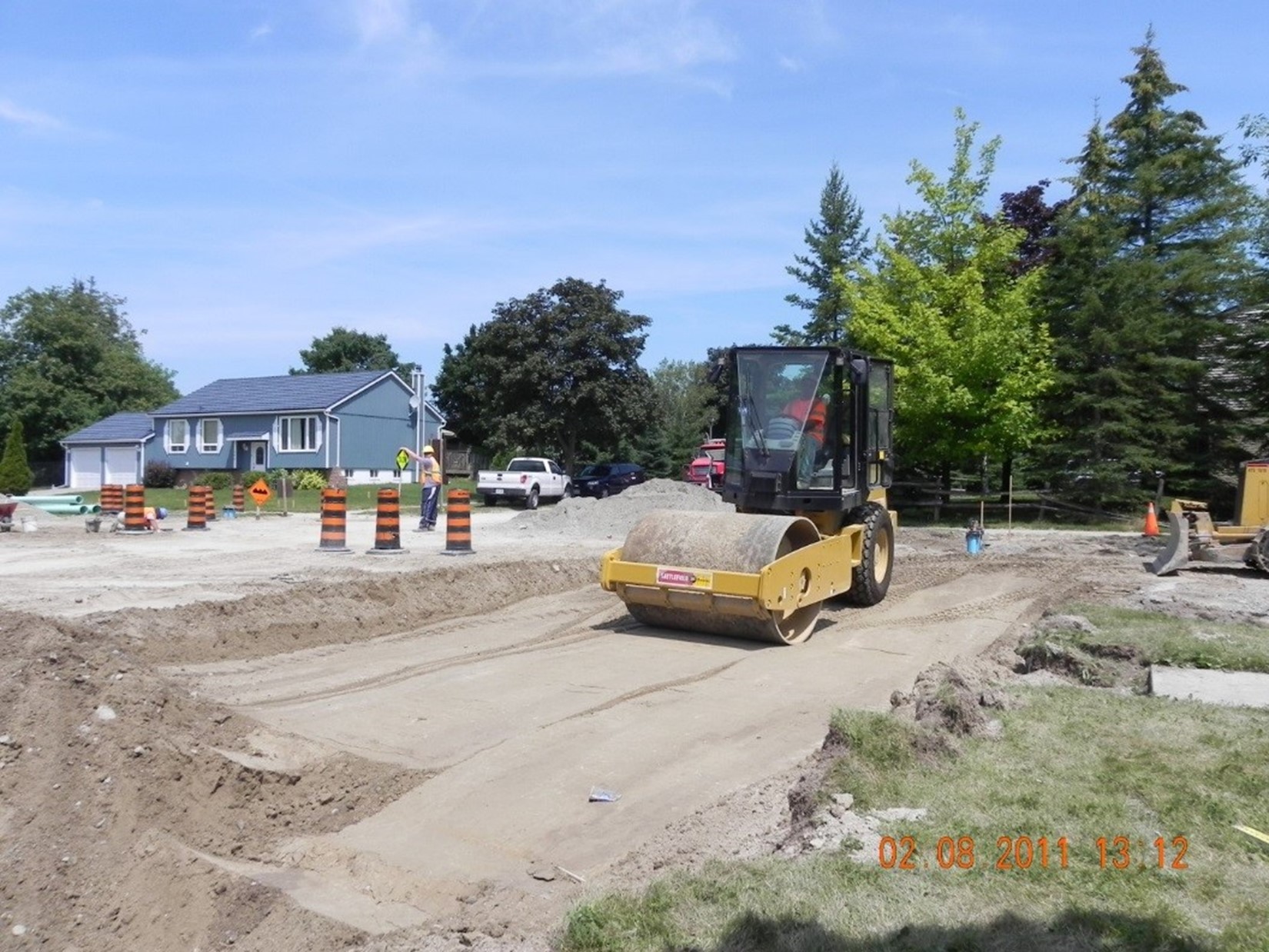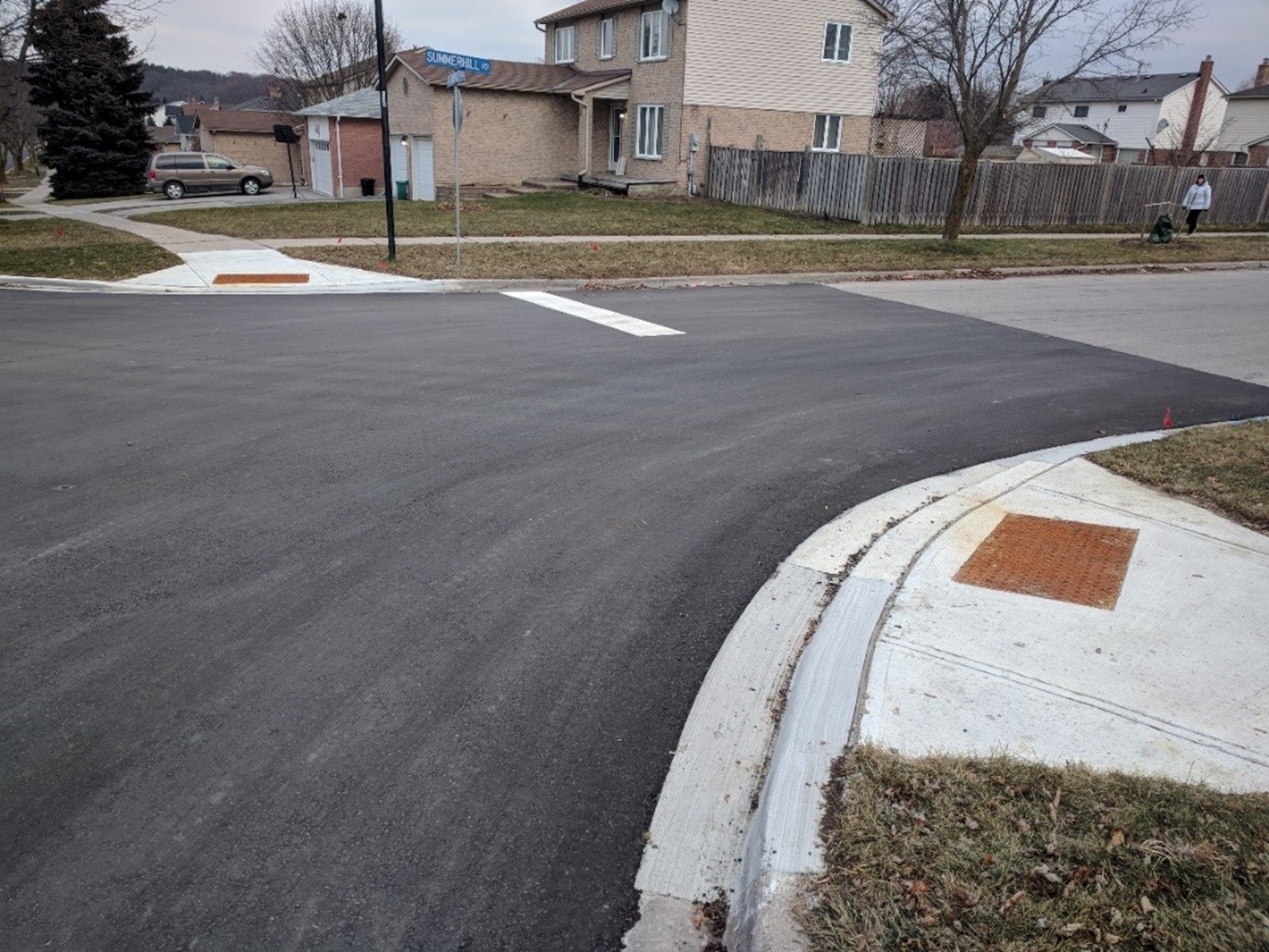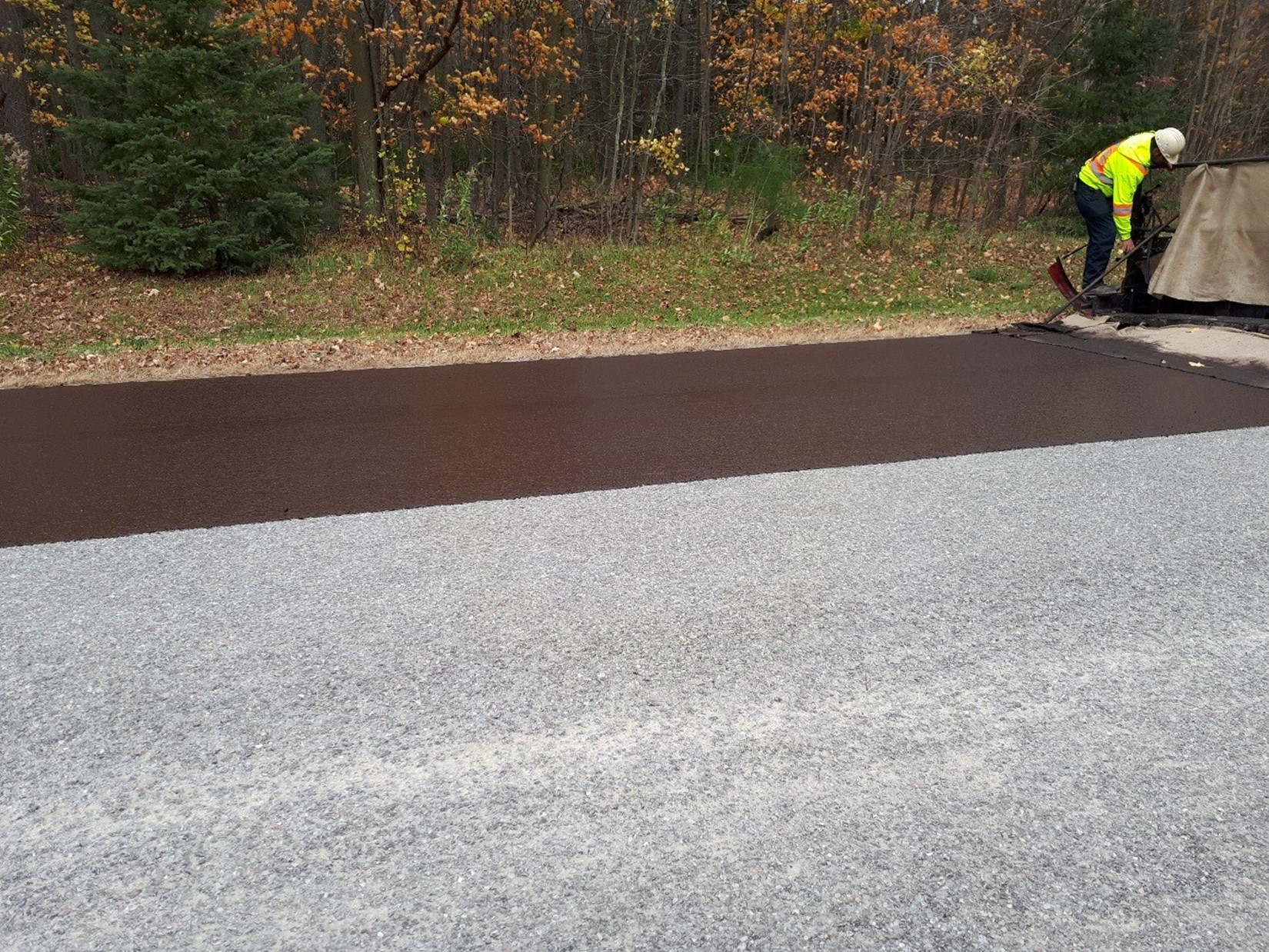
Road Construction Work
The Town of East Gwillimbury (EG) works hard to maintain and improve the roads throughout the year.
Road Reconstruction |
|
Road Reconstruction work involves the removal and replacement of the road surface and granular bedding underneath. This type of work typically includes the replacement of all curb and gutters if present on the street and may include all or some sidewalk replacement depending on the condition. Temporary road closures are usually required for these projects, except for local traffic. Due to the nature of this work, staff inspect existing Town servicing before construction. This includes water mains, sanitary sewers, and storm sewers to determine if repairs are required as part of the construction works. Should Town staff recommend operational improvements, these would be included into the construction works. Should sidewalks be present, sidewalk ramp retrofits may be required at the intersections. This is a recent requirement from the “Accessibility for Ontarians with Disabilities Act” (AODA) which is required for all major road construction projects across Ontario. These retrofits require the installation of iron tactile plates. Construction phasing for this type of work is often project specific, depending on the scope above. However, in general residents may expect the following construction phasing:
Example of a Road Reconstruction project that included watermain replacement. (During Construction) |
Road Resurfacing |
|
Road Resurfacing work involves the removal and replacement of the asphalt surface. The removal and replacement may be required for the full depth of asphalt, or for a partial depth depending on the condition of the road. This work typically includes the replacement of some curb, gutters, and sidewalk if present on the street, depending on the condition. Temporary road closures are not required for these projects however lane restrictions are. Due to the nature of this work, staff inspect existing Town services before construction. This includes water mains, sanitary sewers, and storm sewers to determine if repairs are required as part of the construction works. Should Town staff recommend operational improvements, these would be included into the construction works. Should sidewalks be present, sidewalk ramp retrofits may be required at the intersections. This is a recent requirement from the “Accessibility for Ontarians with Disabilities Act” (AODA) which is required for all major road construction projects across Ontario. These retrofits require the installation of iron tactile plates. In general, residents may expect the following construction phasing:
Example of AODA sidewalk retrofit as part of road resurfacing (post construction) and prior to pedestrian line painting. |
Microsurfacing |
|
Microsurfacing involves the application of liquid asphalt combined with fine crushed stone. The construction is like Slurry Seal and is applied on top of existing road surfaces. It is best to apply microsurfacing on top of roads that have slight to moderate distresses. The construction process is very brief, usually taking 1-3 working days to complete. Temporary road closures are not required for these projects however lane restrictions are. In general, residents may expect the following construction phasing:
|
Double Surface Treatment |
|
Double Surface Treatment involves the application of liquid asphalt on top of an existing road surface, followed by a layer of stone. For “Double” Surface Treatment, this process is repeated with another layer of liquid asphalt then a layer of small stone on top. “Single” Surface Treatments exist; however, these are not used in Town. Temporary road closures are not required for these projects however lane restrictions are. New surface treatment first resembles a gravel road with loose stone on top. However, after months of traffic and compaction, the contractor is sent to the site to remove the excess stone material. This excess material reduces asphalt bleeding while the road cures. After the excess material is removed, the road is much smoother, and continues to improve as time goes on. The year after a Double Surface Treatment is applied, a Slurry Seal application is commonly done, pending budget approvals. These Slurry Seal applications provide a smooth black surface that is better suited for activities such as roller blading. For further details about those works, please see the Slurry Seal section on this page. |
Slurry Seal |
|
Slurry Seal involves the application of liquid asphalt combined with fine crushed stone. The construction is like Microsurfacing and is applied on top of existing road surfaces. It is best to apply Slurry Seal on top of roads that have slight to moderate distresses. It is common to apply Slurry Seal 1 year after Double Surface Treatment road work. The construction process is very brief, usually taking 1-3 working days to complete. Temporary road closures are not required for these projects however lane restrictions are. In general, residents may expect the following construction phasing:
Example of Slurry Seal on top of 1 year old Double Surface Treatment (during construction). The Slurry Seal application first has a brown appearance then turns to black as it cures. |
Crack Sealing |
|
Crack Sealing work involves the sealing cracks in hot-mix asphalt roads. The process begins with routing existing cracks to get an acceptable width and depth for the sealing compound to bond. Once these cracks are sealed, a coating is applied on top to protect the material as it cures. Due to curing, any routing debris on the road gets swept up 2-3 days after completion. Temporary road closures are not required for these projects however lane restrictions are. Due to the efficient process of this work, construction equipment is rarely stopped in one place for long. It is best to conduct crack sealing on roads that have slight to moderate distresses.
Example of crack sealing for the road (post construction). |
Storm & Sanitary Sewer Repairs |
|
Using Closed-Circuit Television “CCTV" Inspections, the Town can assess the conditions of pipe such as storm sewers and sanitary sewers. Depending on the location of the pipe, condition and future construction work on the street, different types of repairs may be recommended. This can include isolated repairs or replacements using excavation. If practical, internal repairs are completed without the use of excavation. These repairs may be done as a single project or combined with larger projects such as road resurfacing or road reconstruction. Due to this, construction phasing for these repairs is project specific. |
Frequently asked questions
To learn more about these construction works in Town, check out these Frequently Asked Questions.
Contact Us
Our Customer Service Team is here to help!




